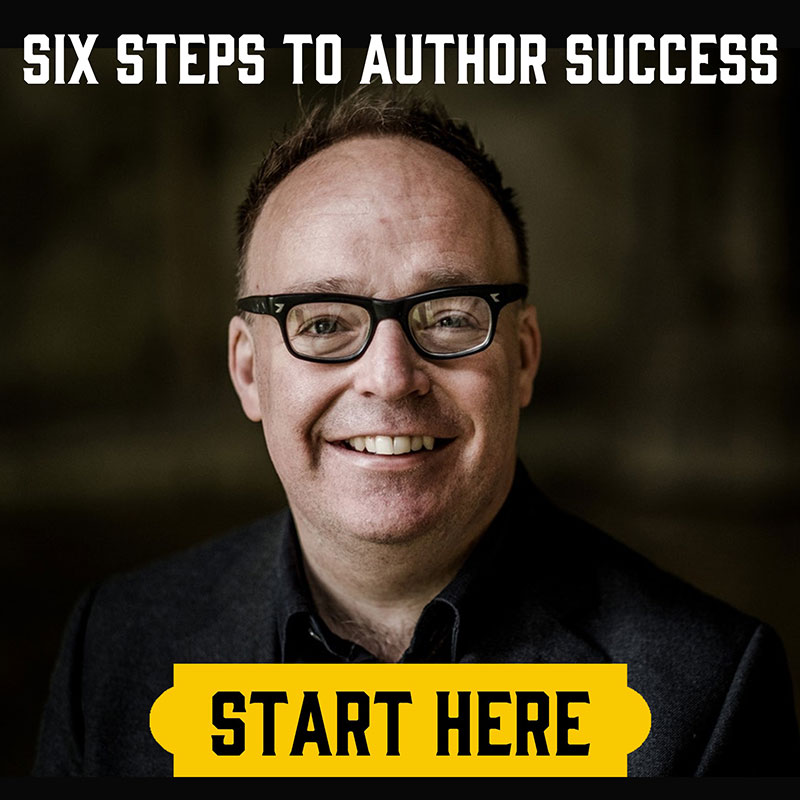How to Reinvent Your Author Brand

Remember the first time you realised you could write and publish a book? Many authors start out as eclectic readers, hoarding inspiration. Loving lots of genres, we fall in love with romances, laugh at comedies, and feel the majesty of epic fantasies. All the while, we internalise the authors’ artistic choices and feel compelled to play the game ourselves. Swan diving deep into the first draft of a passion project without planning, we crank out one book. Two. Three. It’s only after a few titles that we notice issues with our naive creations. As amateurs, we’re blissfully ignorant. As we professionalise, however, we begin to pick holes in the brands we’ve created.
We conclude that we had too much enthusiasm and too little experience. After following the muse, we look back at the inadequate and contradictory creations left in our wake. Perhaps you started several unrelated series and your social media promotes a hodgepodge of genres. So muddied is your brand that you can’t help but fantasise about what you’d do differently if only you started out knowing what you know now. Alas, you can’t start again, can you? You’re pot committed to your current backlist. You owe it to your readers and there’s too much competition now to start from scratch. At least, these are the stories you tell yourself.
However, reinventing your author brand is easier than you might believe. Many authors do it after taking a wrong turn. Admittedly, if you choose to rebrand then you might lose some readers in the short term but, if you’re considering it, that’s probably because your current set-up isn’t working. Will it require work? At first, but you’ll be surprised to discover how much easier it is to build an author brand the second time round. Indeed, it’s possible to transition and come out the other side better than ever. Today’s article will show you how to reinvent yourself as an author with minimal disruption and end up in a favourable situation with a stronger brand.
Define Your New Vision
Every author runs a unique business. As a community, we work in diverse genres, favour various marketing tactics and engage different readers, all following unique paths. Thus, if you want to rebrand, your first port-of-call should be to work out what choices you made to sully your original brand. Only then can you change. Do all your books cater for too niche audiences? Have you attracted readers that expect certain tropes and suffered negative reviews by ignoring expectations? Do you enjoy Facebook but are forced to post on TikTok after finding out that’s where your readers exist? Have you ruined your Amazon also-boughts by writing in several genres?
If any of these are correct, you need to define your vision to ensure you don’t re-follow the same path. Do you currently write for low-spending audiences? In that case, a K-Lytics report could help discover a hotter genre and give you insights on how to brand yourself. If you’re already writing books you enjoy but you’re missing audience expectations then maybe changing your covers is the best course of action. Are you writing romance without happily-ever-afters? In that case, they would do better branded as women’s fiction. Trawling genre bestseller lists, reading blurbs and analysing comparable authors will help you better define your new vision.
Try to Start Afresh
Sometimes, a scatterbrained author brand just needs a consistent tagline that encapsulates the essence of everything to make it work. Say you write about zombies, robots and wizards. Yes, they’re different, but your style might mean all your stories are Tim Burton-dark. Therefore, a “dark speculative fiction” tagline could tie together their branding. Alternatively, perhaps you write about serial killers and double agents but everything’s funny. Try “comedy thrillers.” More often, however, that’s not the case. If, like many of us, you’ve bounced from horror to romance to thrillers to sci-fi, you’ll likely be better off starting afresh with a new pen name.
Before you baulk at the idea of losing the benefit of your backlist, consider this: people hate change but like new stuff. Just look at Twitter (now X). While the platform flounders in a state of change, users are going wild over Threads. Do the brands really offer a totally different service? Not at the moment. It’s just that one is changing, which always faces resistance from existing users, whereas the other is shiny and new. Sure, starting afresh will require work and slow early momentum, but the clarity of your new brand, which is disassociated from your confusing titles, will attract an audience that sees you as a new author and won’t resist the change.
Learn from Mistakes
Whether you decide to start from scratch or tie your existing titles under a consistent brand, you need to change your habits. After all, if you don’t, you’ll end up back in the same place. And as Albert Einstein once said:
“Insanity is doing the same thing over and over and expecting different results.”
So, before you dive back into your writing, resist impatience and mull over your experience so far. What have you done that you enjoyed? What did you hate? What worked and what didn’t? Brainstorming might seem like a time suck but it’ll expose what you could do better on your second attempt and save you time in the long run.
You may have heard that successful entrepreneurs do rather than think, but diving right in is only useful when you have trouble getting started. At some point, you need to reflect. Yes, there is ever-growing competition, but few newcomers will have your experience if you’ve been writing and publishing for a while. Hence, even if they work hard, you can outpace many from a standing start by leveraging your experience and working smart. Doing so, you’ll sidestep familiar trip hazards while they bumble into them. Once you have a plan that anticipates your early mistakes, you’ll be surprised how quickly you can build momentum for Brand 2.0.
Execute a Clean Break
When reinventing your brand requires you to abandon an old pen name, it’s helpful to consider how you’ll break the news to your existing readers. Many authors who leap successfully to their new venture:
- Are honest with existing readers
- Draw a hard line between the brands
For instance, imagine you write a regular newsletter. In your final one that caters for readers of your old genre, explain the situation. Why you’re moving. What your new name is and what sort of books you’ll write. That way, your superfans won’t feel like you popped out for milk and never returned, and those who also like the new genre can follow you to your new venture, fully aware that your new books won’t be like your backlist.
Be understanding if frustrations arise but don’t cave to your old readers. It will only cause you to compromise and muddy a second brand. The key is to be explicit about the genre change to stop old fans expecting a familiar experience in your new work and bombing it with bad reviews when they don’t get it. Start a new email list for the fresh genre and ask fans to sign up only if they’re interested. Then don’t email the old list asking them to buy your new releases, even if it initially underperforms. Doing so will only confuse retailer algorithms and cause long-lasting harm. It’s vital to make a clean break and not ferry unsuitable readers into your new audiences.
Simplify Your Operation
As authors we do a lot. We write books but we also send newsletters, update social media accounts, juggle retailer promos, manage paid ads, maintain our websites, and much more. It’s only after reflecting that we realise how much of our day is busywork we only continue to do because we’ve already sunk so much time into it. Meanwhile, other authors who do less outpace us in the arenas that really matter. Thankfully, a reinvention empowers you to disregard the sunk cost fallacy. A portion of the audience you’ve built won’t want to read the books under your new brand anyway, so why worry about them? You can stop posting without guilt.
Indeed, if you really want to change your brand and ensure it’s successful, cut out time-wasting activities that you’ve come to realise have only slowed your progress so far. Simplify everything.That way, you can lean into more profitable or enjoyable activities and leverage them to their fullest potential. For many authors, a rebrand means shutting off Instagram notifications, leaving TikTok, taking a back seat on content marketing — cutting out whatever activities they dislike to work more efficiently on what really matters. Consider this second brand your opportunity to shrug off work baggage and focus on whatever inspired you to write in the first place.
Follow all the suggestions in today’s article and you’ll increase the chances of successfully reinventing your author brand. Instead of wading through mud and compromising on your vision as you encounter obstacles as you did the first time, you’ll progress with clarity, creating an intentional brand and lifestyle. Will starting again be easy? It isn’t for most, but few worthwhile endeavours are easy and this mammoth task will not only result in a better brand but a more fulfilling personal identity. The spoils of your hard work will be worth the effort.

Daniel Parsons
Dan Parsons is the bestselling author of multiple series. His Creative Business books for authors and other entrepreneurs contains several international bestsellers. Meanwhile, his fantasy and horror series, published under Daniel Parsons, have topped charts around the world and been used to promote a major Hollywood movie. For more information on writing, networking, and building your creative business, check out all of Dan’s non-fiction books here.
Grab Your SPF Freebies!
Sign up to receive your SPF starter package, which includes a free 3 part video series on getting started with FB ads, and inspirational and educational weekly emails.

